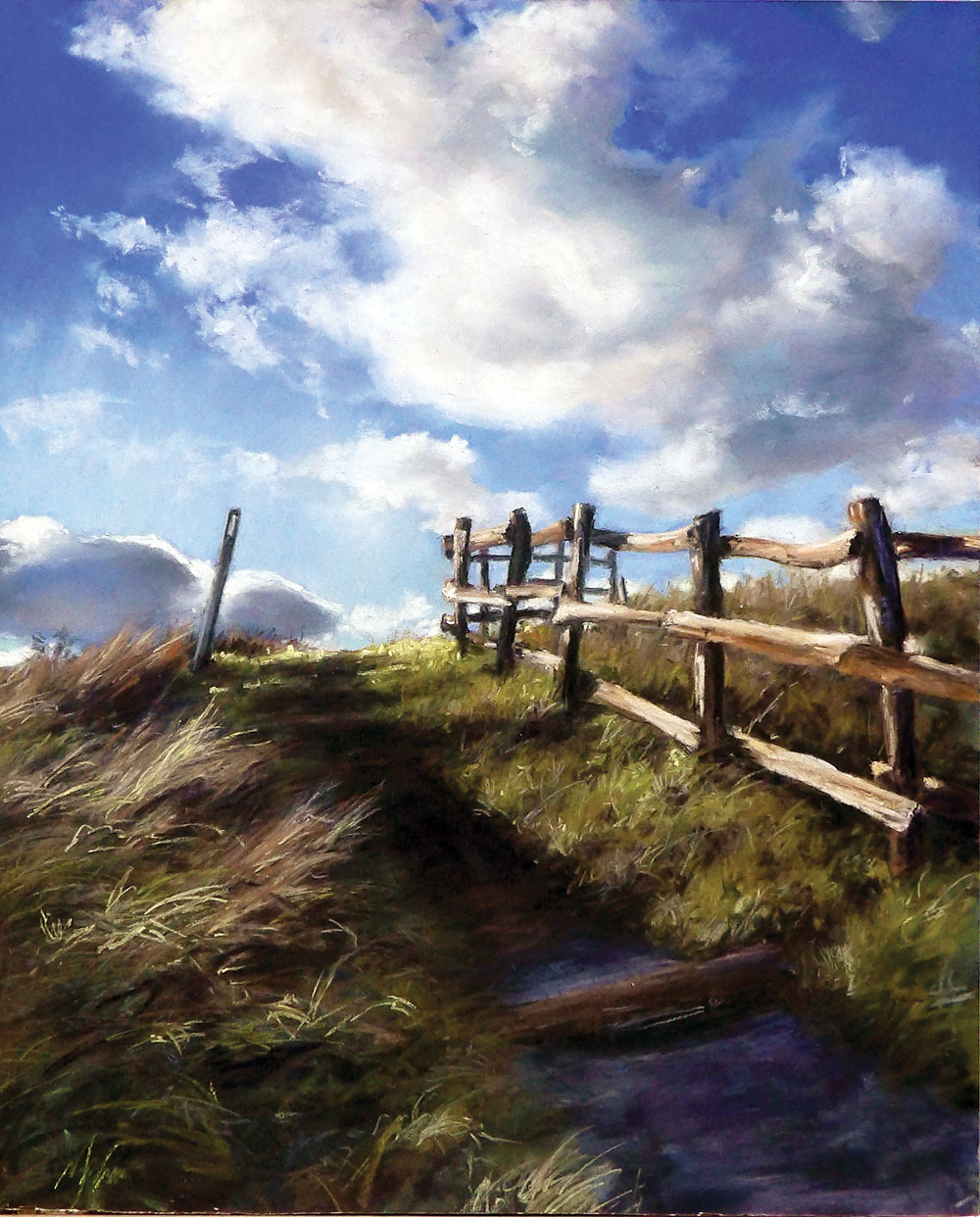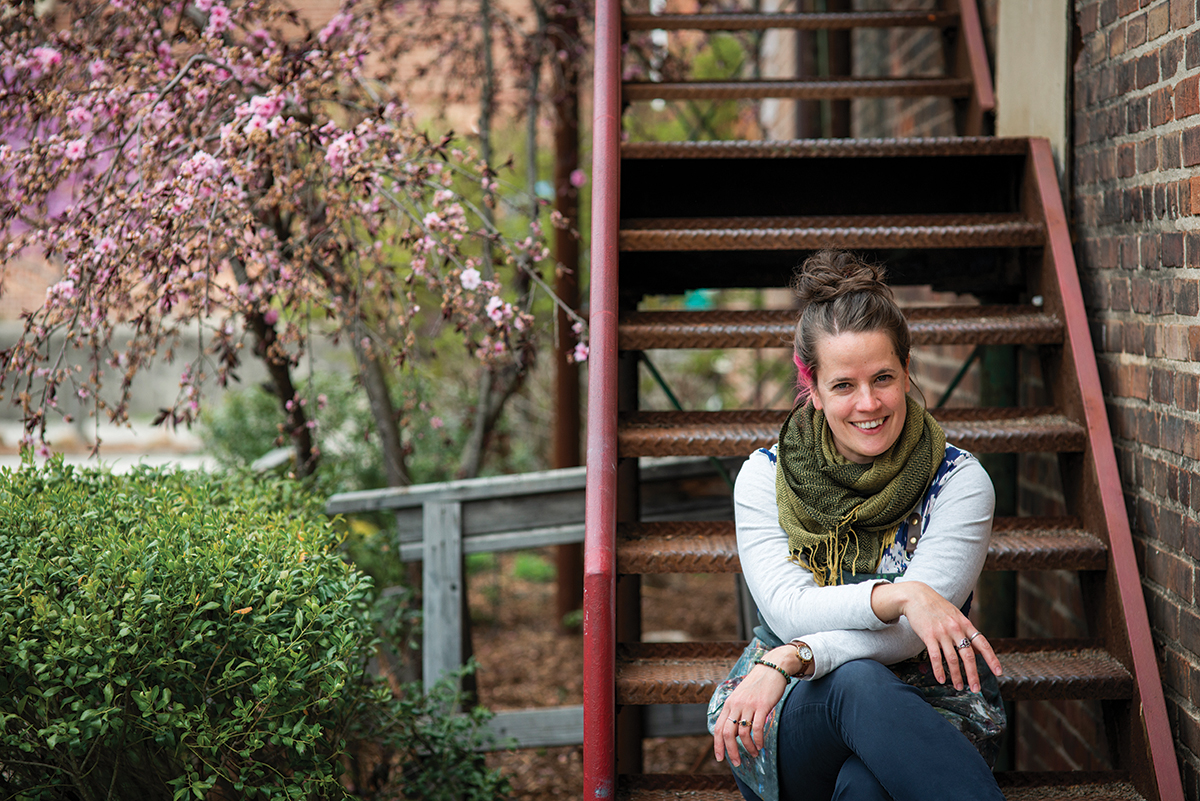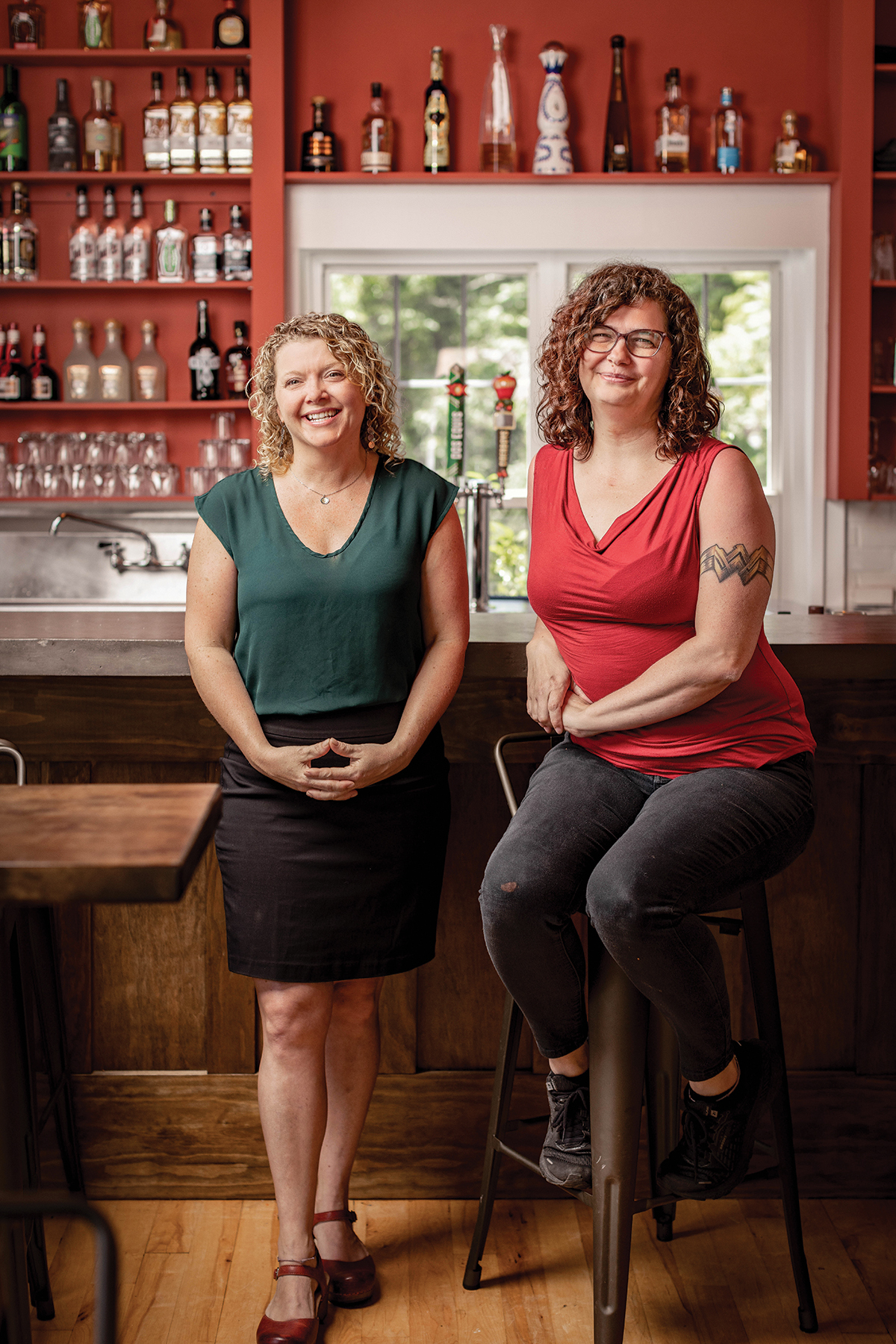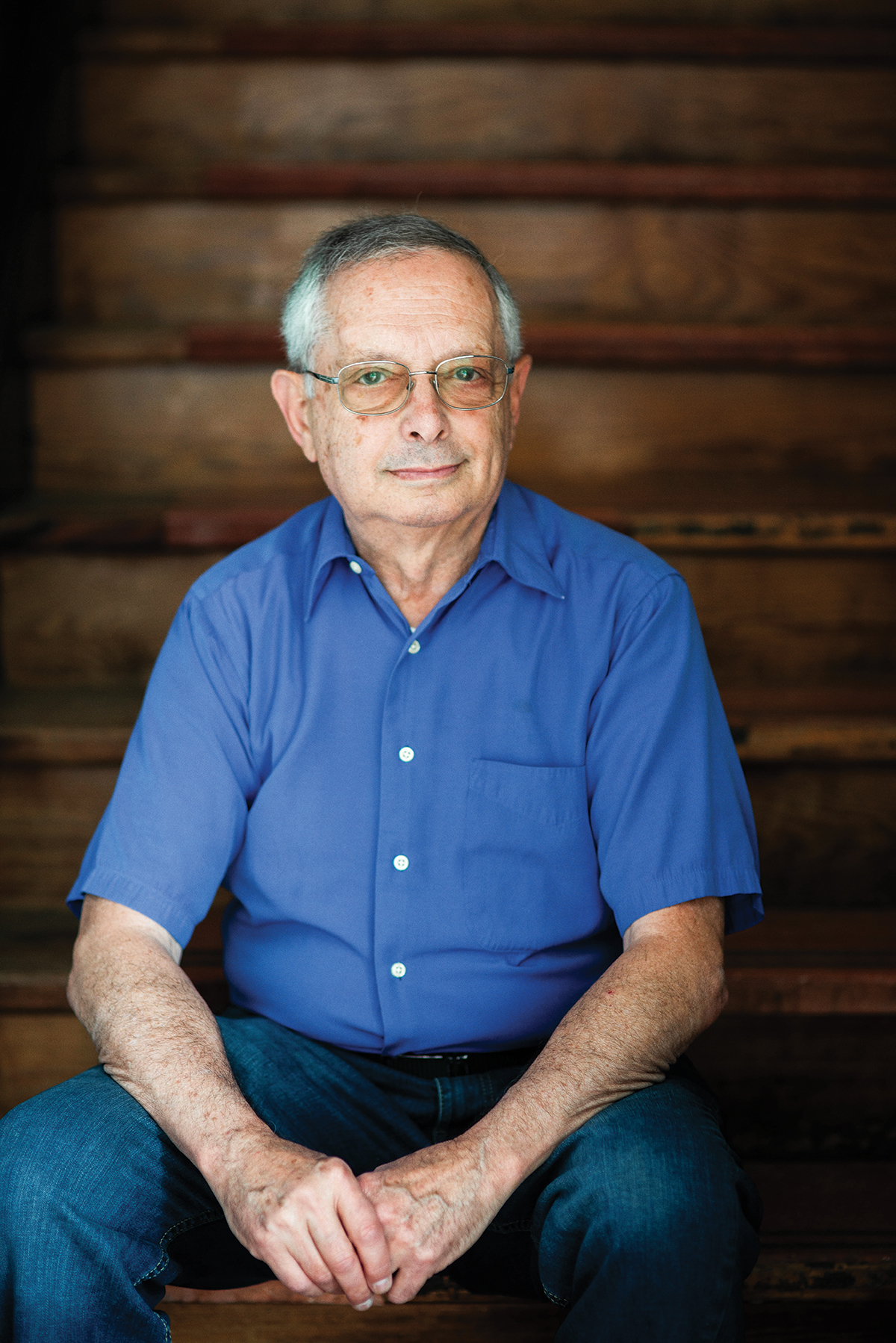
Rebirth-Max Patch by Mike Wurman
Three years ago, when painter Mike Wurman made a return visit to the place that had special significance to his career, he found himself in shock. The site was Max Patch, just off the Appalachian Trail on the North Carolina/Tennessee border. A famous mountain bald with sweeping, 360-degree views of the Black Mountains range (including Mount Mitchell) and the Smokies, Max Patch had inspired Wurman in 2014 to begin painting what he saw, leaving behind a moribund career as a graphic designer.

Would rather be hiking
Painter Mike Wurman lives his best life on the trail. Portrait by Colby Rabon
But on that later visit at the height of the COVID pandemic, Max Patch had been despoiled by scores of partygoers and illegal campers who had turned it into a virtual tent city, captured in a drone photograph Wurman took that went viral and led to the U.S. Forest Service temporarily closing the site.
“Max Patch, to this day, is still a motivating factor in not just my art, but in my life,” the Oklahoma-born Wurman says, recalling the day in 2014 he first visited. “I not only found out who I was as an artist or as an individual, but I was introduced to backpacking.” The outdoors, he states passionately, flows through his veins “like oxygen-rich blood.”

Evening Appeal
That deep natural connection animates Wurman’s landscapes, which seem to shimmer with the energy that so motivated the artist on first encountering the mountains nearly a decade ago. He works mainly in pastels, another discovery after years of using stark graphite. “My work [then] was tight, rigid, and very detailed,” Wurman notes. “So when I discovered the colorful world of pastels, everything changed. My paintings were loose and quick, not so much impressionistic but more relaxed, and a lot less detailed than what I had done in the past with pencil.”
Wurman’s work now strikes a balance between the detailed and the panoramic. The immediate photographic quality of his painting reveals, on closer inspection, highly detailed brushwork. He’s become a master at blending tricky pastels to produce the natural palette that so captivated him on Max Patch.

Just Over The Hill
“They’re still my medium of choice, but I do like to explore and experiment with new mediums and techniques,” says Wurman, referring to his work in charcoal and acrylic. “I find it keeps the creative juices flowing and helps maintain the excitement to create.” Wurman will often use charcoal for underdrawing before turning to pastel to complete a piece; or, in the case of a recent commission to depict downtown Asheville’s historic Jackson Building on Pack Square, work almost entirely in charcoal with pastel highlights.

Fall On Kenilworth
He creates some of his landscapes as part of his long association with Preserving a Picturesque America (PAPA), an artists’ collective dedicated to revisiting and capturing on canvas, film, and in the written word the historic landscapes that first entered the national consciousness in 1873’s Picturesque America or The Land We Live In, an illustrated compendium assembled by William Cullen Bryant. PAPA founder and illustrator Scott Varn leads the effort to revisit and record the sites in Bryant’s book for a new Rediscovering a Picturesque America.

Bearwallow Mountain
“I’ve had the opportunity to join Scott on rediscovering sites, some of which haven’t been seen or painted in 150 years,” Wurman says of his PAPA-inspired work. “It’s incredibly rewarding, not only to rediscover these sites, but also to take other artists to these locations and see their enthusiasm grow when they realize they’re standing in the exact spot an ‘adventure artist’ stood many, many years ago.”
Wurman helps organize “paint-outs” at locations such as Max Patch to help raise funds for PAPA, which markets the work and splits the proceeds with the artists and with organizations like the Appalachian Trail Conservancy and the Carolina Mountain Club.

West Winds Blow
Wurman himself has hiked all four legs of the Appalachian Trail, capped by summiting Mount Katahdin in Maine in the summer of 2018, four years after his artistic epiphany at Max Patch. It still serves as an inspiration for him whenever he hits a creative roadblock.
“I’ve learned the best thing to do is walk away from whatever piece is giving me problems,” he says. “I simply get outdoors and walk a trail — after that, I can return to work.”
Mike Wurman is a member of Number 7 Arts (2 West Main St., Brevard). His work for Preserving a Picturesque America is included in the organization’s gallery at Saluda Studios (144 US Hwy. 176, Saluda).



